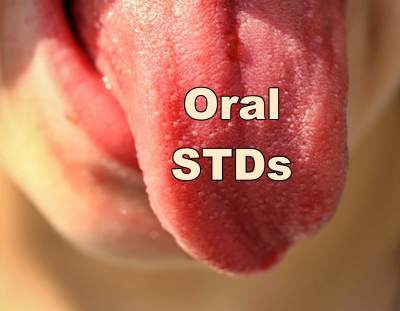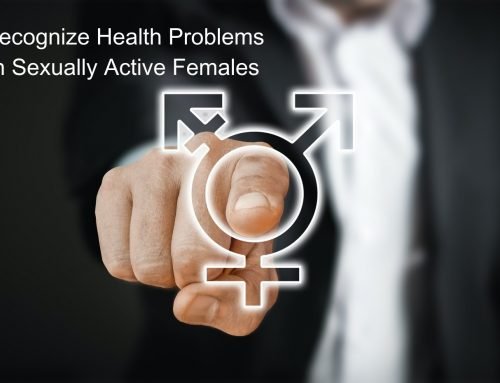Oral STDs are types of diseases that get transmitted from person to person when the mouth, tongue, and lips come in contact with the genital areas of an infected person. There are many types of sexually transmitted diseases like gonorrhea, Chlamydia, and syphilis that are contagious and so can be spread orally. A lot of oral STD cases are seen among teenage girls and boys and adults from ages 15 to 45 years old. According to a health survey carried out from the year 2006 through 2008 in the United States found out that 80% of adults and 45% of teenagers engaged in oral sex with their respective partners at least once.
Click here to schedule a free consultation
As of now, there are many methods available due to the advancement of medicine that help keep STDs in check and also help individuals manage the symptoms without having to put their lives on hold. As it is the case with most diseases, prevention is always better than cure. Let’s look at some of the types of oral STDs and how once can prevent them.
Oral Sex
When talking about sexually transmitted diseases, it is mostly thought of as something that can be contracted from person to person through just vaginal and anal sex. However, that is not the case as even skin to skin contact with an infected person’s genital area can cause sexually transmitted disease. In simple terms, oral sex is the sexual act where a person’s lips, mouth, and the tongue come into direct contact with the anus, vagina ( vulva, clitoris, and the vaginal orifice), and the penis of another person.
A person can give as well as receive an Oral STD in this way. A person giving oral sex to another that has the genital and anal infection can get oral STD in their mouth and throat. Similarly, a person that has a throat and mouth infection can give the other person sexually transmitted diseases on their genital areas, including the penis, vagina, and the rectum.
Types of Oral Sex
There are three different types of oral sex, namely:
- Anilingus
- Cunnilingus
- Fellatio
-
Anilingus
Anilingus or rimming, as it is called in popular culture, is the act of using one’s mouth, tongue, and teeth as a way of stimulating the anus of the other person. Since the anal orifice is composed of a lot of nerve endings, it is seen as an erogenous zone. This type of oral sex is very risky as it carries a huge amount of risk as to contracting a sexually transmitted disease. Syphilis and herpes are some common sexually transmitted diseases that can be transmitted through anilingus. Additionally, the person performing the sexual act is also susceptible to getting gastrointestinal diseases, Hepatitis A, etc. due to the presence of stool in the anal opening.
-
Cunnilingus
It is a type of oral sex that involves the tongue, lips, and mouth of a person used as a means to stimulate the vaginal orifice, vulva, and the clitoris of a female. It is considered somewhat less risky than other forms of oral sex. As with the case of Chlamydia and gonorrhea. The pathogens causing these infections are found in the cervix area. Since the performer’s tongue, lips, and mouth do not go that far, they cannot get these infections. But Cunnilingus is not completely risk-free. The person performing Cunnilingus can still get syphilis, herpes simplex virus as these infections are found on the skin of the outer genital areas.
-
Fellatio
Fellatio is an oral sex act that involves using the tongue, mouth, and throat of a person as a way of stimulating the penis of a male. The act carries a lot of risk in terms of getting and giving a sexually transmitted disease. Fellatio involves the risk of getting Chlamydia, gonorrhea, syphilis, herpes (both oral and genital), and even HIV. There is a popular belief that not letting the receiver of fellatio ejaculate in the performer’s mouth can completely erase the risk of getting an STD. It is actually a myth, and even if a person does not ejaculate in the other person’s mouth, there is still a great risk of contracting an STD. The receiver is susceptible to getting gonorrhea as well as genital herpes, while the performer is at risk of catching syphilis and oral herpes.
Click here to schedule a free consultation
Types of Oral STDs
-
Herpes
Herpes is caused by a virus called Herpes Simplex Virus. There are two types of it, HSV 1 and HSV 2. HSV 1 is the number one cause for oral herpes, while HSV 2 causes genital herpes. However, genital herpes can also be caused by HSV 1 while engaging in oral sex. Both oral and genital herpes are characterized by sores that appear in around the mouth area in the case of oral herpes and around the genital area in the case of genital herpes. Anyone can get oral herpes regardless of age. It can spread via kissing, sharing of eating tools, and toothbrushes.
The virus resides in the saliva, the mucous membranes, and the skin of an infected person. When the healthy skin tissue of a person comes in contact with the broken skin of an infected person, there is a risk of getting oral herpes. The virus, when it enters the body, stays there for a lifetime. It first starts to clone after entering the healthy skin and causes sores that are very painful when they burst open.
The virus then moves to the tissues around the spine area and stays there in a dormant state. Upon external stimuli and triggers, the virus gets activated, and the sores appear once again, this is called a recurring outbreak and is accompanied by fever and muscle pain.
Prevention: Oral herpes can be avoided by not touching oral secretions, mucous membranes, and skin that are covered with sores.
To learn about another form of Herpes read our recommended post: Basic understand of Genital Herpes
-
Oral Chlamydia
Chlamydia is a sexually transmitted disease which is caused by the bacteria Chlamydia trachomatis. Although Chlamydia mainly affects the penal, vaginal, and anal areas, it can also cause oral Chlamydia through oral sex. The bacteria reside in the mucous membranes of the genital areas and reproduces there. Via anal and vaginal sex, a person can spread Chlamydia to their partner.
Oral Chlamydia can be contracted when a person engages in oral sex with a person that has Chlamydia. Usually, there are no symptoms, but when they do occur, they mimic the symptoms of a common cold. A person might experience a swollen throat and pain. To ascertain if a person really has oral Chlamydia or not, it is important to get tested, especially if they had oral sex with someone that has Chlamydia. The symptoms to look out for are dental issues, mouth sores, pain in the mouth, sore throat, and sores around the mouth.
Prevention: To avoid contracting Chlamydia, it is important to use protection during vaginal, anal, and oral sex. Also, it is recommended to get tested for possible sexually transmitted diseases regularly.
-
Gonorrhea
Gonorrhea is a disease that is caused by bacteria affecting both males and females alike. Most commonly, it affects the throat, the rectal area, and the urethra. It is most commonly spread via oral, anal, and vaginal sex. In females, it can affect the cervix. Gonorrhea can also get transmitted from a mother to a child during delivery. In infants, it greatly affects their eyes. The symptoms of gonorrhea include abnormal discharge from the penis and the vagina, pain during urination, pelvic pain and bleeding after sex in women and swelling in one testicle in men.
Prevention: The best way to avoid getting gonorrhea is to abstain from sex or to use protection while engaging in sexual intercourse. It is also important to get both partners checked and tested for any possible STDs. Apart from that, if one partner displays signs of an STD, it is best to avoid any sexual activity with them and get them tested. Having multiple sexual partners also raises the risk of contracting gonorrhea, and so a monogamous relationship is also a great way to prevent it.
-
Syphilis
It is a sexually transmitted disease that is caused by the bacteria Treponema pallidum. The bacteria live in the sores that are present in the genital areas as well as around the mouth. A healthy person, when they come in contact with those sores can get syphilis. It does not show any signs or symptoms, and so it is very difficult to diagnose.
Its first sign is a sore or a chancre that appears on the genitals or inside the mouth. It is best to get it treated as early as possible as; if it is left untreated, it can cause serious damage to the heart and the brain. The risk factors of contracting syphilis increase manifold when a person engages in unprotected sex have multiple sexual partners, or has HIV.
Prevention: The surest way to avoid getting syphilis is to avoid unprotected sex, using dental dams and condoms during oral sex, getting regularly treated for STDs, and also avoiding sharing of needles.
-
Epstein Barr Virus (EBV)
Also known as the human herpesvirus 4, Epstein-Barr virus belongs to the family of the herpes virus. It is the virus that causes mononucleosis or mono, as it is commonly called. It is a very common virus that affects humans, and everyone, at some point, gets it. The virus mostly spreads through oral secretions but can also spread through seminal fluids, blood during sex, organ transplants as well as blood transfusions.
It can spread through kissing, sharing of toothbrushes, cups, food, and drinks. The symptoms do not show up until 4 to 6 weeks, and they are mostly flu-like. They include swollen glands, rash, fatigue, fever, and a lack of appetite. The symptoms get better in a period of 4 to 5 weeks on its own.
Prevention: There is no vaccine for Epstein Barr Virus, and so it is best to avoid kissing and having sex, sharing of toothbrushes, and cups with an infected individual. It is also recommended to stay away from anyone that has mono.
-
HPV (Human papillomavirus)
Human papillomavirus or HPV is the most common type of sexually transmitted disease. HPV has many types and are linked to the appearance of warts on the genital areas, hands, and feet. Almost all cases of cervical cancers are also caused by HPV. Human papillomavirus is transmitted through oral, vaginal, and anal sex and affects more than half of all sexually active individuals. It can also be transmitted from an infected mother to its child during delivery, in which case the child develops respiratory and genital infections.
Prevention: HPV can be prevented by the use of condoms during sex and generally practicing safe sex. There are no treatments available for HPV, but it can be prevented with the help of vaccines. The Gardasil 9 vaccine is used to prevent warts and other types of cancers associated with HPV. Both boys and girls age 11 and 12 are vaccinated with two doses, which are spread out over a period of six months.
Apart from that, both males and females of ages 15 to 26 can also get vaccinated. Individuals ages 27 to 45 who were not vaccinated previously can now get vaccinated with the vaccine Gardasil-9. Additionally, it is recommended to get regularly tested for any possible sexually transmitted disease, including HPV.
Recommended Post for
Preventing Oral STDs
Sexually transmitted diseases are on the rise, with more and more people getting affected by them each year. Engaging in unprotected sexual acts is the main cause of STDs, with oral sex being one of its causes. In order to prevent sexually transmitted diseases through oral sex, it is important to avoid unprotected sex altogether. Each time someone engages in oral sex, it is recommended to use condoms and dental dams.
In terms of fellatio or oral to penis contact, it is recommended to use a non-lubricated condom. For Cunnilingus or oral to vagina contact and anilingus or oral to anus contact, the use of dental dams are recommended.
Apart from these, one can also opt for a long term monogamous relationship with one partner. Also make sure that your partner does not have any STDs. Having multiple partners is associated with an increased risk of getting an STD. Lastly, it is also important to get screened regularly to check for any STDs.
Recommended Post: Preventable STDs That You Should Know About
Oral STD Testing
It is advisable that all men and women who are sexually active go for Oral STD testing once each year. This also includes people that have multiple sexual partners and pregnant women. Also, it is important for males and females that are under 25 years of age to get yearly tests for gonorrhea, syphilis, and Chlamydia.
Additionally, people from 13 to 65 years of age should get screened for HIV at least once in their life. There are various ways in which each STD is tested; for instance, chlamydia and gonorrhea are tested via urine samples and genital swabs. HIV is tested via a mouth swab and a blood test. As for herpes, it is tested via a blood test.
Final Thoughts
Sexually transmitted diseases are transmitted not only from person to person through vaginal and anal sex but also through oral sex. While some of these are curable, some cannot be treated aside from managing its symptoms through medications. It is, therefore, extremely important to lay more stress on its prevention rather than cure. For starters, it is necessary to use protection during oral, vaginal, and oral sex. Condoms and dental dams are a sure-shot way to prevent most oral STDs.
Another important thing to note is to go for a long monogamous relationship as STDs are more prevalent among those that have multiple sexual partners. Additionally, it is also important to get regular screenings and tests done even when someone is in a monogamous relationship. The sooner that these sexually transmitted diseases are caught, the better are the prospects of getting full treatment and recovery.
Reference Links
- Types of oral STDs: Reference from healthline.com
- Disease related to oral STDs: Reference from mouthhealthy.org
- Oral STD testing: Reference from healthline.com





